The painting of Boyarynya Morozova
Mon 2 Nov 2020 by mskala Tags used: politics, religionSince about 2016 I've been using this image as the banner on most of my social media profiles. It is a painting called Boyarynya Morozova by Vasily Surikov, depicting Feodosia Prokopiyevna Morozova (the term Boyarynya is a title of nobility similar to "Duchess") being dragged away in chains in 1671 at the order of Tsar Alexis I. She was tortured and imprisoned until dying of starvation on November 2, 1675; 345 years ago to the day, as I'm writing this. These events were part of an upheaval called the Raskol in the Russian Orthodox Church during the mid-17th Century, which led to Morozova's faction splitting off to become the group known as the Old Believers, who still exist, but are rather few and obscure, today.
The painting (click for higher-resolution version) interests me for the parallels of the historical event and its context to the present-day situation that is called the Culture War. There's a lot to be learned by comparing parallel past events to what we see going on in the world today. Although I didn't include the Raskol in particular in the background of my novel Shining Path, historical parallels interest me a great deal, as do religious movements and schisms, and I used many of them in that book.
The simplest description of what happened is that in 1653, Patriarch Nikon, then leader of the Russian Orthodox Church based in Moscow, made changes to the officially-authorized forms of certain rituals. The changes were to things like whether to bow at certain points during a divine service; how many times to say "hallelujah"; and, especially, how to hold one's fingers when making the Sign of the Cross. Russian Orthodox worshippers prior to the reforms would usually hold out two fingers together, with the thumb and other two fingers folded down. Nikon decreed that instead they ought to hold two fingers and the thumb together, as was done at the time by the Greek Orthodox Church and nowadays is standard in nearly all Eastern Orthodox denominations. These changes were controversial and many people ended up being put to death for opposing them.
The focal point of the Boyarynya Morozova painting is her chained hand held up in defiance, making the forbidden gesture.
Here's another painting, by Pyotr Yevgenyevich Myasoyedov, of Archpriest Avvakum being burned at the stake in 1682, after a long imprisonment. He was Feodosia Morozova's confessor and one of the leading religious theorists of the anti-Nikonian faction.
It's all too easy to believe that that summary was really all that was going on - especially if one is inclined to dismiss all organized religion as foolishness anyway. Yes, hundreds of years ago a bunch of silly persons got wound up over a hand gesture and some of them killed each other for it. After all people were maybe less rational at the time than today, and they had funny ideas about what was important. Right?
Maybe we should look a little deeper.
I want to emphasize what a big deal an arrest like this really was in the context of 17th Century Russia. Feodosia Morozova was not just some crank. She was a high-ranking noblewoman, extremely wealthy; lady-in-waiting to the Tsar's first wife, and sister-in-law to his tutor. For someone like that to be dragged away in chains was shocking and momentous. Are we really to believe that someone at the highest level of the nobility would be summarily removed from society, dare I say it "cancelled," just because of an arbitrary hand gesture? How could the system turn on one of its own like that, and what could motivate her to put herself at risk of that fate? Maybe there were other things going on.
Something else worth knowing is that although the conflict existed at the highest level of the nobility, the Raskol also stretched down into the lowest levels of Russian society. The painting symbolizes that spectrum with the beggar in the lower right, who makes the same gesture, expressing support. What are we to make of a movement in which the richest and the poorest see their interests aligned?
The big storyline in 17th Century Russian history was the construction of a modern empire with a central and urban government, capable of being taken seriously among the great powers of Europe, out of what was formerly a loosely organized patchwork of principalities, mostly rural and governed by mostly-independent boyars. Peter the Great is credited with achieving this goal, and he did not come into power until 1697, but it was a process already well underway at the time of the Raskol a few decades earlier. The transfer of power from the rural boyars to the Tsar, and the associated cultural changes, were being keenly felt at all levels.
Now, let's consider some basic religious theory, which I think may be unfamiliar to some readers but which is pretty important in understanding the issues here; and even if you're familiar with this stuff you may want to take note of which points I'm choosing to emphasize.
Many religions have a concept of a legitimate line of descent of the religion itself. You may have heard of Sunni and Shia Islam? The fundamental difference between the two (although many cultural and other differences have arisen subsequently) has to do with different concepts of how leadership of the faith was validly transmitted from the Prophet Mohammad: the Shia view traces a line of succession through the relatives of the Prophet, mostly father to son, whereas the Sunni view follows leaders chosen in a not necessarily hereditary way. Many Buddhist groups have a concept of valid transmission from teacher to student. Modern neopagans may or may not consider initiatory lineage to be important (maybe I was initiated by this person who was initiated by that person, who was initiated by this other person, on back through however many years and generations) - you'll sometimes hear the term "puppy papers" used to refer to documented lineage, mostly but not entirely by those from groups who happen to disapprove of it.
In Christian theology something similar is called "apostolic succession." Who were the legitimate sucessors to the founder Jesus, which group or groups at the present time (if any) can claim valid transmission of the religion from him, and on the more abstract level, what is the significance of having such transmission? One way to describe the different flavours is to divide them into (Roman) Catholic, Orthodox, and Protestant traditions. Jesus is generally not thought to have any human, biological descendants. It is generally agreed that he named his follower Peter to succeed him as leader of the organized faith. The Catholic and Orthodox traditions take the view that the valid line of apostolic succession then went from Peter to others and for at least some period of time the True Church was based in Rome. Roman Catholicism, hence the name, claims that this line of succession is still valid, is still based in Rome, and is still authoritative over the whole world.
The Orthodox view today seems to be that it either went somewhere else, so that the single true authority is no longer located in Rome (but at some location claimed by the particular Orthodox denomination in question), or that the line branched and there are now multiple valid lines of apostolic succession with authority in different places. The views of modern-day Protestant denominations are even more diverse but usually either hold that apostolic succession was never an important concept to begin with, or that there may once have been a true line of succession but it has now been lost or interrupted, and that in any case the other groups claiming to have unique successor status traceable back to Jesus are necessarily mistaken or lying. Of course, everything I say here can be peppered with footnotes and exceptions - nearly any imaginable statement will fail to apply to at least a few exceptional Christian groups who have other positions.
Patriarch Nikon was officially the leader of the Orthodox Church in Russia from 1652 to 1666, although he was effectively out of office (leaving it vacant) starting in 1658. His agenda for the Church during the time he was active was closely aligned with the Tsar's agenda for Russian society as a whole: to centralize in Moscow, and establish power over the lower-level provincial authorities who had formerly been more or less independent. That is where apostolic succession became important: the Nikonian doctrine was that the line of succession really mattered, that there was only one true line of succession, and that the one true line of succession had now passed from Rome to Moscow. Moscow was, in so many words, the New Rome.
In order to credibly make the claim of global authority for Moscow, he needed to be able to say that the form of the rituals used in Moscow was exactly the true and correct form handed down along the true line of succession. He also needed to be able to say to other Orthodox groups that their forms of rituals were compatible with the Moscow forms - so what was done in Moscow had to be reasonably close to what was done in other Orthodox traditions, the Greek Orthodox tradition in particular. Nikon also needed to be able to present all Russian Orthodox churches as a unified entity sharing the same rituals with and subject to the authority of Moscow.
Meeting those needs meant doing historical research on the ancient forms of the rituals; discovering (but some would put scare quotes around "discovering") that the way things were currently being done in rural Russia was not the true ancient way; and correcting the errors. Here's a painting by Aleksey Kivshenko of Nikon, the scholar Epifany Slavinetsky, and various other experts revising the service books into a form much closer to the forms used by the Greek Orthodox church.
Nikon convened a great meeting or synod of religious leaders from all over the empire, including some representatives from even further afield. It was claimed that the delegates received rich gifts that looked a lot like bribes, and that they had been selected in the first place with care to produce the desired result. And the synod voted to adopt the revised or corrected rituals.
The changes were unpopular. Anybody who really believed in the importance of uninterrupted transmission of holy rituals would naturally want extremely convincing evidence of any claim that the way they'd been doing it for many years was wrong and some other way was right. We shouldn't underestimate the importance of that consideration in a society where religion really mattered. It was also easy to find procedural fault: anyone looking at the process by which the changes had been issued could easily suspect that it wasn't motivated entirely by piety. It looked exactly like a political power grab and a whole lot of people figured that if it looked like a power grab, it was a power grab. And especially those in the elite upper classes who were in the process of losing their secular political power to the Moscow central government, were inclined to see the religious questions as inextricably connected to the cultural questions of whether the society should change, and who should be in charge.
And that is how the seemingly contradictory aspects of the anti-Nikonian faction arose, how we could end up with a movement that was important to beggars and Boyarynyas alike. On the one hand, it was populist, with individual believers at the lowest levels of society who basically had nothing to give their lives meaning except religion, resenting any attempt to tamper with that source of meaning. On the other hand, it became part of the conflict over centralization of power between the Tsar's government in Moscow and wealthy landowners who had formerly enjoyed a great deal of autonomy in their own provinces.
Existing issues and conflicts that were already important became crystallized on the framework of the Raskol as it purported to be over minutae of liturgical reforms. It was a conflict over what kind of culture Russia ought to have - a culture war. And the anti-Nikonians were simultaneously conservative, in resisting changes to the existing culture; nationalistic, in especially rejecting changes that were perceived as foreign dilutions of the Russian identity of the church; but populist, seeing their national identity as something distinct from the institutions of the national government. Does this description sound familiar?
In present-day terms we might say that "The Raskol was all about a hand gesture" is the small-brain take and "The Raskol was actually about populism versus the overreaching authority of the central government" is the large-brain take; but then the galaxy-brain take is that hand gestures are really very important after all!
Think about this one.
Is the okay sign "just" an arbitrary gesture? What does it symbolize to different groups of people today? Doesn't it potentially implicate a whole lot of deeply divisive cultural and political issues? Could a wealthy and powerful person get into serious trouble for making this gesture? Could a low-status individual lose everything over this gesture? (Hint: that already happened.) Do you see parallels between the 17th and 21st Centuries yet?
Those who live by the sword shall die by the sword, and those who live by "cancellation" shall be "cancelled." That's what happened to Patriarch Nikon. In 1658 he left his duties as Patriarch without officially resigning and retired to a monastery 40km from Moscow. It's not clear to me exactly why he did that but it looks like it may have been a stunt to prove his own indispensibility to the empire; although he was formerly a close friend of the Tsar, they seemed to have become estranged at that point. For six years the question of who was actually in charge of the church in Moscow was unclear. In 1666, church leaders convened the Great Moscow Synod. They dragged Avvakum and others of the anti-Nikonian faction out of jail to testify at the inquiry, and then they voted to kick Nikon out of his position as church leader. Nikon, no longer Patriarch, was sent as a prisoner to a distant monastery.
This painting by Sergey Miloradovich shows the synod holding court over Patriarch Nikon.
However, the same synod also ratified and affirmed the reforms that Nikon had instituted, pronouncing an anathema against those who still held to the older ritual forms. Note that the arrest of Boyarynya Morozova for her anti-Nikonian position, the starting point for my article, was actually in 1671 - several years after Nikon himself had been removed from the picture.
I see parallels between the Nikonians and the cultural pseudo-Left of the 21st Century as it devours its own, despite holding all the more strongly to their past work. As just one example, the fate of certain figures who have been active in pushing Codes of Conduct within the free software community comes to mind - and the ongoing commitment to those Codes despite the unpersoning of their originators. The pattern is repeated again and again that those who deal in forcing others into exile, end up being exiled themselves.
In conclusion, the Raskol was an interesting chapter in the history of the Russian Orthodox church; it went much deeper than its surface manifestation as a conflict over details of ritual practice; and it shows surprisingly close parallels to conflicts that exist now, over three centuries later. I hope people will pay more attention to it and to whatever lessons can be learned from it.
3 comments
The sheer size of Russia and the frequent preference of putting physical distance between yourself and your enemies rather than fighting them (something that Dmitry Orlov has written about in his 2015 essay "Peculiarities of Russian National Character"), means that very many "unfashionable" traditions never entirely died out in Russia but continued existing somewhere for much longer than in other, more crowded, parts of the world. For example, the solo singing of long, epic poems (how the Greek "Odyssey" and "Iliad" were originally experienced, as well as the Arthurian legends) survived in Russia longer than anywhere else in Europe as far as I know (even longer than runner-up Finland), with the living tradition only being interrupted around the 1960s (even though Russian ethnomusicologists of the 19th century had thought it was already long gone, but they simply hadn't traveled enough), and now once again being picked up after a short interval. It is hard to really make something fully disappear, though easy to live in the centre and believe it has. It is thanks partly to the Old Believers that we can decipher what was sung in Russian churches before the Nikonian reforms - they also reformed the notation system to one closely based on the Western music notation system we all know, VERY different from what was used before, a descendant of Ancient Greek notation (via the Byzantines). The music, of course, changed very radically as well. It had been all about long, mostly solo melodies sung atop a sometimes-changing drone (though there were polyphonic compositions too, which sound strange to our ears), and it changed to melodically simpler block-chords similar to the more mediocre Western religious music of the time. It was only later that Russian religious music began to sound distinctive and "Russian" again (though not in the same way as before).
This sort of thing happens in Russia periodically. They go through a period of going their own way compared to others, they become very advanced in some areas (of knowledge, or art, or craft) but fall behind in other areas. A leader comes along who decides to import wholesale the customs from the West, and there follows a period when EVERYTHING old is thrown out or replaced, indiscriminately.
It has happened over and over again. The most recent case were the duo of Gorbachyov and Yeltsin (yet another case of one who starts a societal revolution being brought down by it), but the Nikon era was certainly another similar period.
Esn - 2021-12-22 02:37
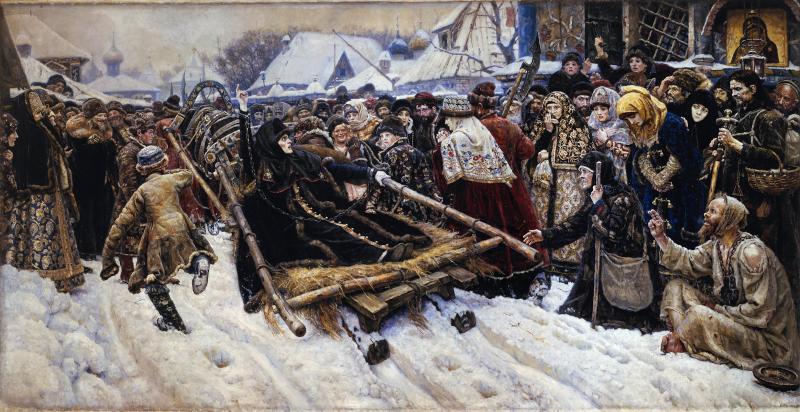
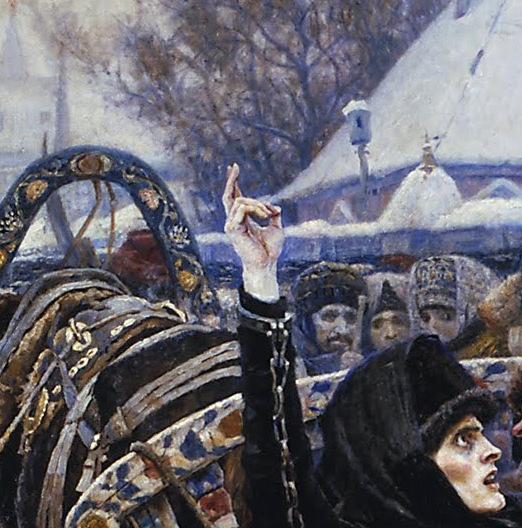
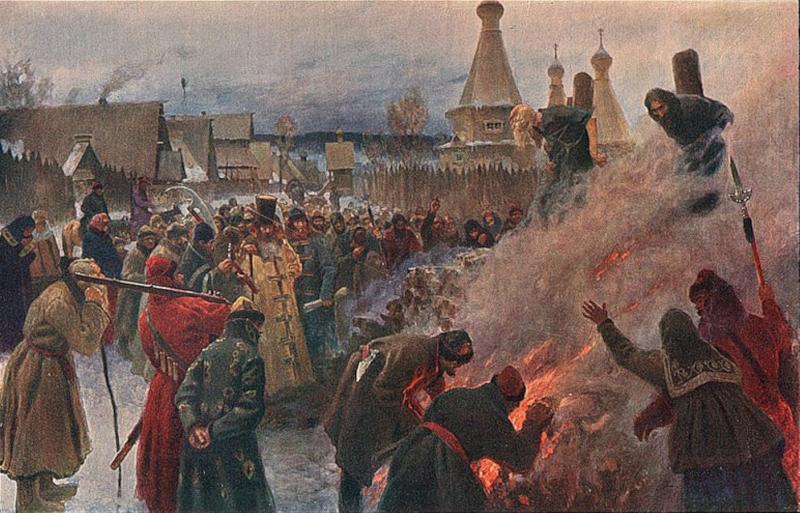
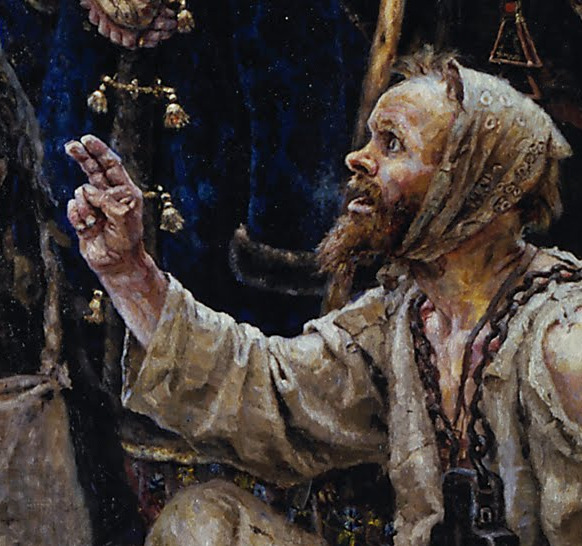

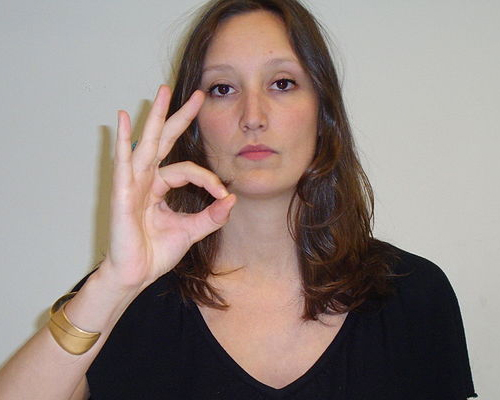
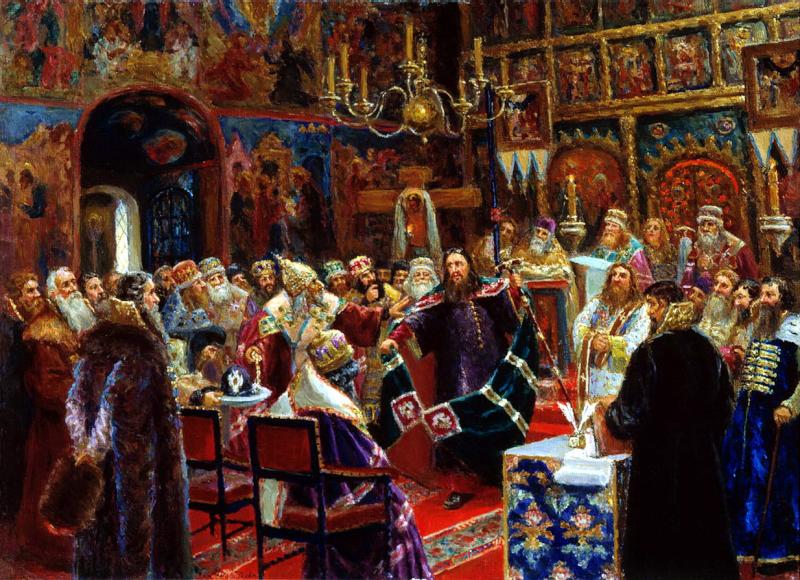

Tony H. - 2020-11-13 10:53